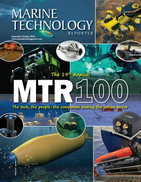Chief of Naval Operations (CNO) Adm. John Richardson toured the Navy's newest oceanographic survey ship, USNS Maury (T-AGS 66), April 8 to gain a better understanding of the oceanographic information the ship provides to the Department of Defense.
The CNO is the senior military officer of the Department of the Navy and is responsible for the command, utilization of resources and operating efficiency of the Navy.
"Naval forces require information about the physical environment to operate safely and effectively," said Rear Adm. Tim Gallaudet, oceanographer of the Navy and commander of the Naval Meteorology and Oceanography Command. "Our oceanographic survey ships are key contributors of this information that ensures the U.S. Navy maintains advantage against our competitors."
The importance of the information about the ocean environment collected by oceanographic survey ships like USNS Maury was recognized by Richardson last month when he established Task Force Ocean. Gallaudet and Chief of Naval Research, Rear Adm. David Hahn co-chair an executive steering committee for Task Force Ocean comprised of senior leadership representatives from U.S. Fleet Forces, U.S. Pacific Fleet, the U.S. Naval Academy and Naval Postgraduate School. The task force will develop a five-year roadmap designed to accelerate ocean science that supports the Navy's mission.
Richardson was interested in how USNS Maury will enhance the work of Task Force Ocean by helping us learn more about the ocean, including hydrographic surveys of uncharted regions and advancing our understanding of how the ocean water column, sea surface and seafloor advance underwater acoustic system performance.
"Advancing the capabilities that USNS Maury and her crew represent is the reason we've stood up Task Force Ocean," Richardson said.
During the tour provided by Gallaudet and crew members of the USNS Maury, Richardson was able to gain first-hand insight into how the ship's crew performs acoustic, biological, physical and geophysical surveys. The ship is the first of a new class of survey vessels better equipped to support unmanned systems survey operations, and includes a moon pool used for launch and recovery of the systems. Richardson was particularly interested in Naval Oceanography's innovation in advancing oceanography - for platforms and sensors, as well as the moon pool and the array of unmanned systems used (including unmanned underwater vehicles, autonomous underwater vehicles, drifting buoys, profiling floats and moored GPS buoys).
Richardson's tour included the moon pool bay, and static displays of unmanned systems and data processing systems. He also visited the bridge, staterooms and a lifeboat. Richardson concluded the visit by presenting a plaque to the ship's master and thanking the crew for hosting him on the weekend.
The Office of the Oceanographer of the Navy is the CNO's resource, requirements and policy adviser for the Navy's oceanography program. The oceanographer also serves as the Navy's senior policy adviser for issues related to national ocean policy, governance and interagency ocean activities.
Commander, Naval Meteorology and Oceanography Command directs and oversees more than 2,500 globally-distributed military and civilian personnel who collect, process and exploit environmental information to assist Fleet and Joint Commanders in all warfare areas to make better decisions faster than the adversary.
The Author
Jenni T. Ervin, Naval Meteorology and Oceanography Command Public Affairs
• 
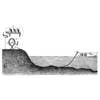
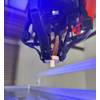
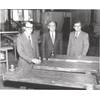
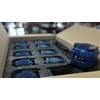

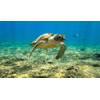







 August 2024
August 2024


